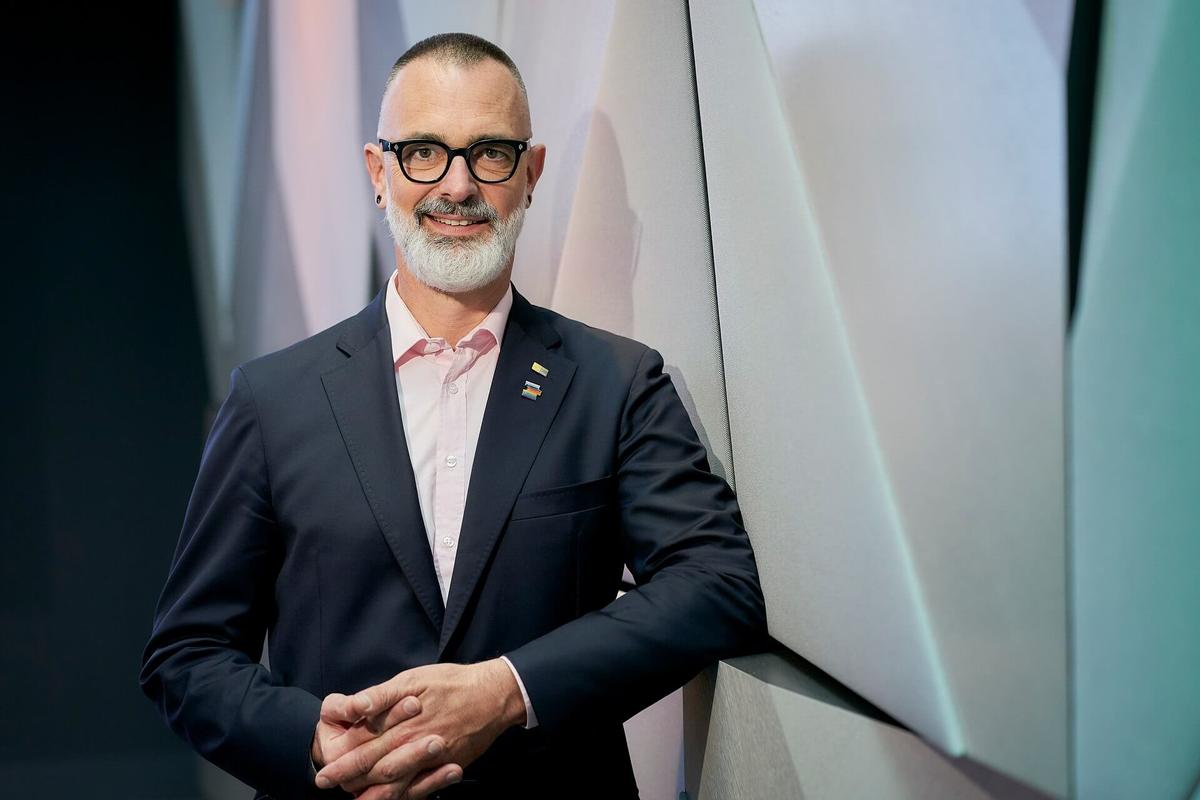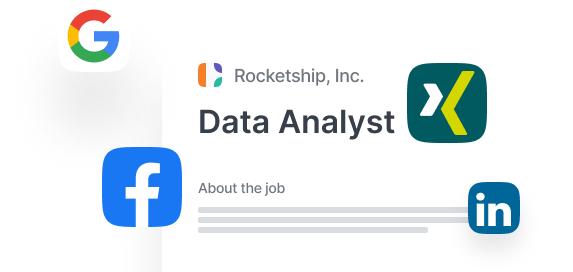We’ve discussed in previous articles why it’s important to have a diversity recruiting strategy in place. And, we’ve provided you with a list of diversity job boards on which you can focus your diversity recruiting efforts when it comes to hiring.
But, a factor which is just as important to take into account when kicking off your diversity recruitment is ensuring that you’re using inclusive recruitment practices. After all, posting to diversity job boards is of no use if you’re using language that isn’t inclusive, or you’re not actively promoting diversity, equity, and inclusion in your workplace.
To help you understand how you can work towards a more inclusive recruitment process, we spoke to an expert on the subject, Albert Kehrer from PROUT AT WORK.
Who is Albert Kehrer?
Firstly, an introduction to the expert we will be speaking to, Albert Kehrer.
Albert Kehrer (AK) is the co-founder and director of the PROUT AT WORK-Foundation, a German-based charity working on equal opportunities for LGBT*IQ people in the workplace. Albert also consults companies on diversity and unconscious bias and works as a coach for people in management positions.
We spoke to Albert to find out which steps should be taken during recruitment to encourage more diverse candidates to apply for open positions. Our particular focus in this interview is on LGBT*IQ candidates.
How can hiring managers, HR Managers, and recruiters actively encourage a more diverse selection of candidates?
(AK): I think it’s really important that if you want to diversify your recruiting and selection processes you challenge yourself. Take a close look at how and why you have been selecting candidates, and ask yourself if there are patterns that lead to your workforce not being diverse enough.
You have to define in which way you want your teams to be more diverse. In setting recruiting goals and targeting certain groups, you will find that there are lots of talents that, previously, would have stayed hidden from you.
For example, because they need to be encouraged and shown that their race, gender identity, sexual orientation, or religious belief, just to name a few, are not preventing them from performing and having a career. Instead, they are actually valued as assets in an appreciative corporate culture.
One way to change your point of view is through unconscious bias training. Becoming aware that most of us still have a positive bias towards straight white men can really bring a change of perspective to the table.
It’s about changing your attitude and leaving your comfort zone.
How can companies showcase an accepting and inclusive workplace in job advertisements beyond simply using ‘m/f/d/’?
(AK): Fortunately, gender-inclusive language in job advertisements is now a legal requirement in Germany. It was fought for, and is a first step to visibly including people in your recruiting processes who were previously excluded.
But being a legal requirement anyway, using m/f/d is just the minimum you can do, and we have to be aware that this is only the beginning of opening up working environments for everybody.
Of course, it should be the individual qualification that is crucial in deciding whether a candidate is a fit for you or not. But if we consider that individual qualifications can be much more than just a final grade or meeting all the requirements in the job description, then it becomes clear that it is about opening up and not only allowing—but searching—for different perspectives.
We highly recommend including a sentence at the bottom of your job advertisements that emphasises that you are an inclusive employer and that you welcome applications from all people regardless of their age, gender, gender identity, sexual orientation, social or ethnic origin, and so on.
You should also focus on making visible what you are already doing. Show people, who want to join you and who visit your career page, that you have active employee resource groups (ERGs). Showcase your diversity activities and mention how you plan on becoming an even more inclusive company. For example, by pointing out your partnerships with organisations like PROUT AT WORK.
If people understand that you are not content with doing the minimum, they will accept your credibility.
What are some recruiting mistakes which may deter LGBT*IQ candidates?
(AK): We live in a heteronormative world, where we assume people we meet are heterosexual and only male or female.
Basically every question about family planning is unlawful, but people still get asked about it, especially when assumed to be female. So in all conversations, be aware not to use language that excludes people who are not straight and cisgender.
Meaningful inclusive language is great, and it can be very simple. When talking about the applicant’s family in the interview, use phrases like “plus one” or partner instead of husband or wife. While showing the rainbow flag on all of your homepages and social media is an important sign, it is much more about being inclusive in the recruitment process and especially in one-on-one interactions. This can be done by showing your pronouns in your e-mail signature and generally asking for the pronouns someone likes to be addressed with.
In some recruiting tools, the gender of the applicant is asked for or is even a mandatory requirement, but do you really need the gender of an applicant to determine whether the person is qualified or not? I think LGBT*IQ candidates are especially sensible concerning these topics because it might give them an idea of how open and authentic they can be about themselves in everyday business.
How do companies ensure they are mindful all the way through the recruiting process (e.g., during interview stages)?
(AK): As I said at the beginning, it’s about challenging yourself.
There is no simple solution that facilitates mindfulness in a way that takes the constant process out of mindfulness. You can’t really quantify something that involves sensibly interacting with people. What you can do is look closely at where the problems are and harness that knowledge.
Reflect on yourself throughout the recruitment process and learn about your biases. Then have someone play devil’s advocate to challenge all assumptions about applicants and be clear about whether they are relevant or not.
I think the overall goal still is to achieve cultural change. What we wish for is that one day we don’t have to think about being more inclusive towards LGBT*IQ, because we already are. But as long as that is not the case, we will have to be mindful, and we will have to be firm about it.
In your guide “Coming out for insiders”, you mention bisexual employees, women, non-binary people, and transgender employees are more hesitant to come out in the workplace. Are there special steps employers can take to make these groups more comfortable, starting from the recruiting process?
(AK): Well, it is those groups that experience the most discrimination and hostility in the workplace. It is not so much that we want them to come out. We want employers to create an atmosphere where they feel they can come out. That includes feeling as though they can identify themselves not only with the proclaimed, and hopefully lived, values of a company but also with the real people they engage with.
As mentioned before, if those groups only find straight white people that don’t seem to care much about LGBT*IQ topics sitting in an interview, how can they be sure they can be safe to come out?
If you have recruiters that are LGBT*IQ and out, include them in the process to show applicants that being who they are is not a risk to having a career in your company. That is how you can reassure them that their being LGBT*IQ doesn’t change anything in respect of belonging with you.
Make LGBT*IQ topics ordinary topics to talk about. If you mention your diversity activities, explicitly mention your LGBT*IQ activities as well. If you have an LGBT*IQ person applying for a job and mentioning this in their CV or cover letter, have them be interviewed by an LGBT*IQ person as well, and connect them with your LGBT*IQ ERG. That is how you show them that you acknowledge possible concerns about coming out, not to you as recruiters, but to their other colleagues they will be seeing every day.
Learn more about inclusive recruitment
Has discovering these important considerations made you eager to learn more about working towards an inclusive recruitment process and a further inclusive workplace? If so, you can check out the previously mentioned guides from PROUT AT WORK.
You can also find ideas and processes in our diversity, equity, and inclusion blog articles.




